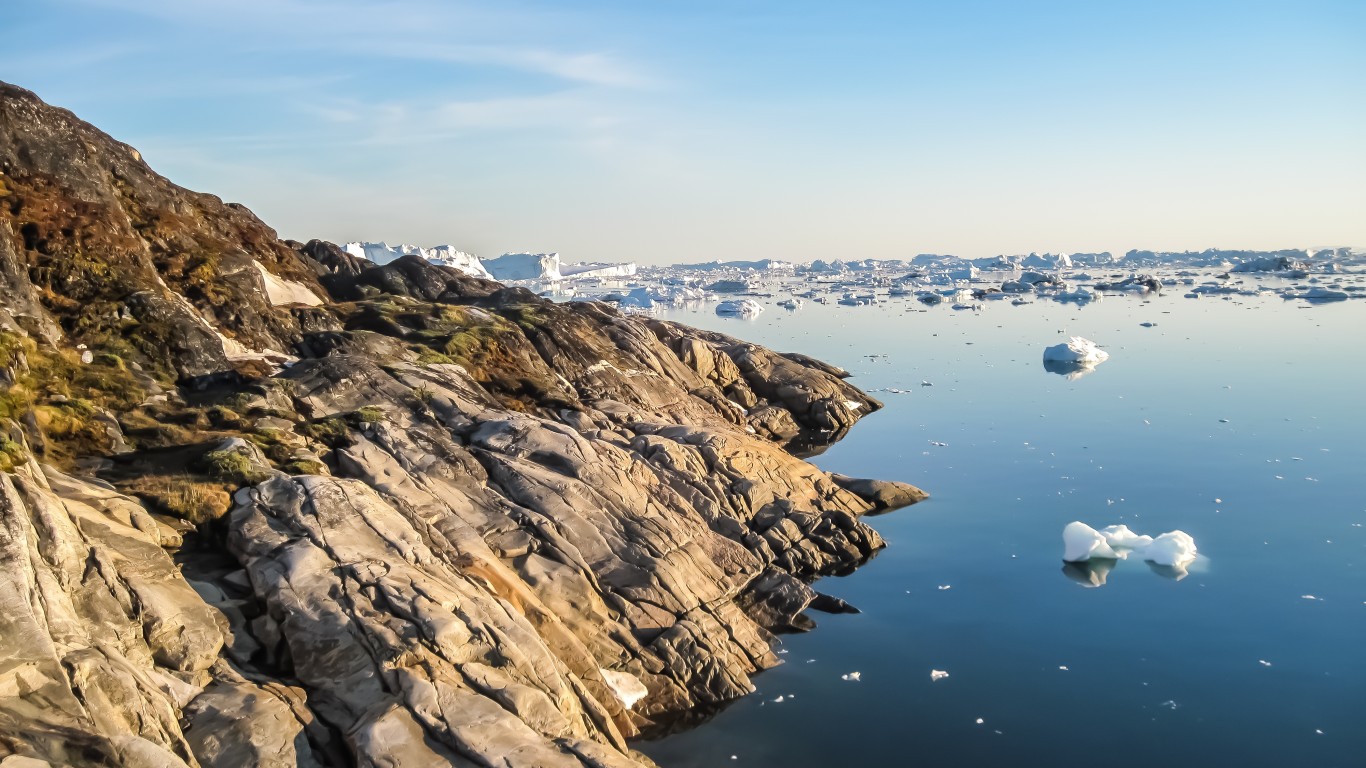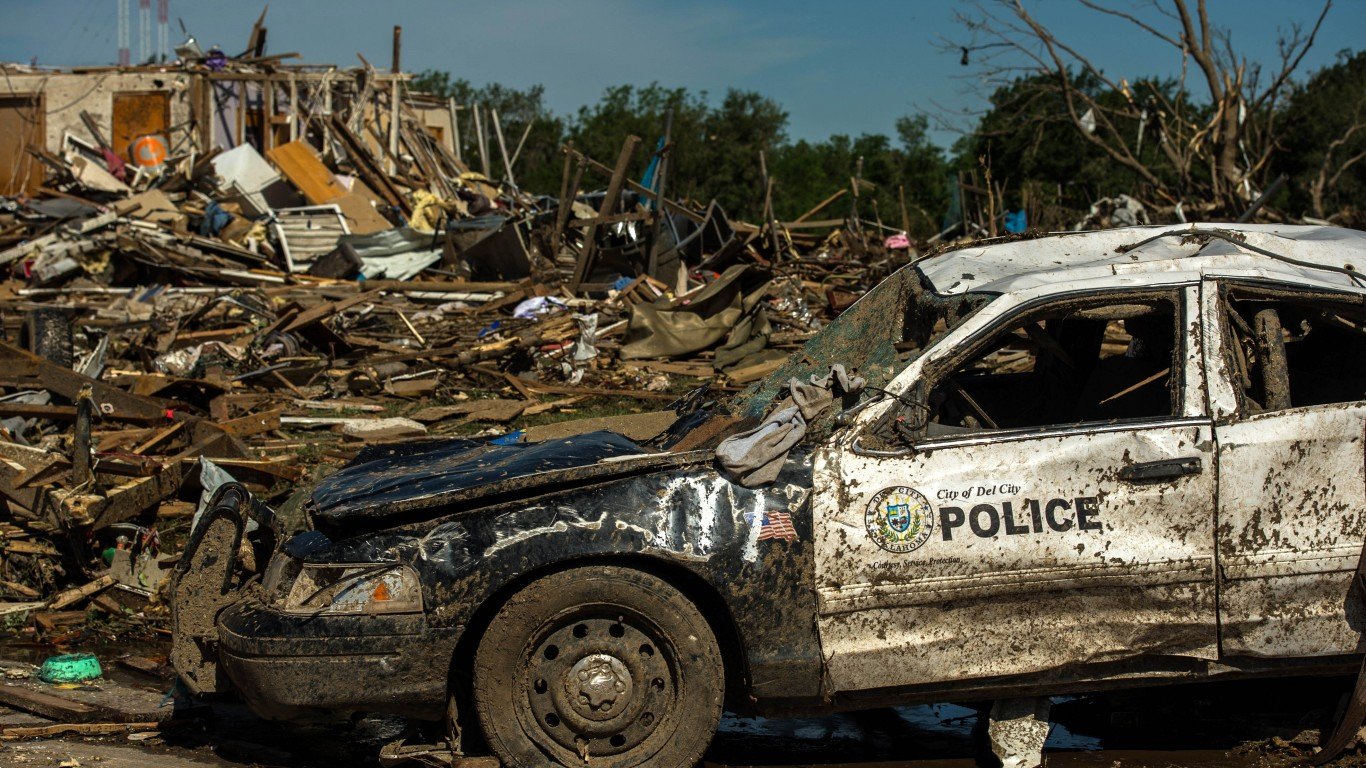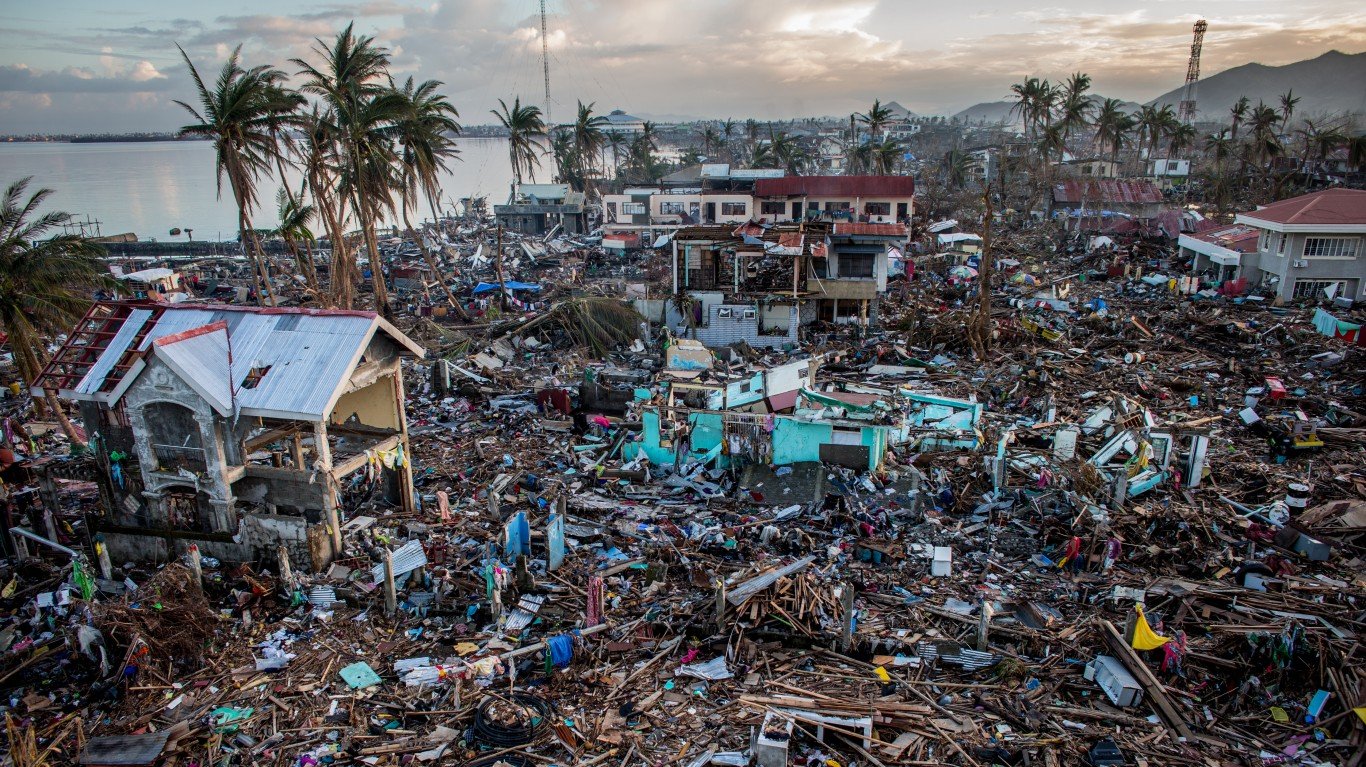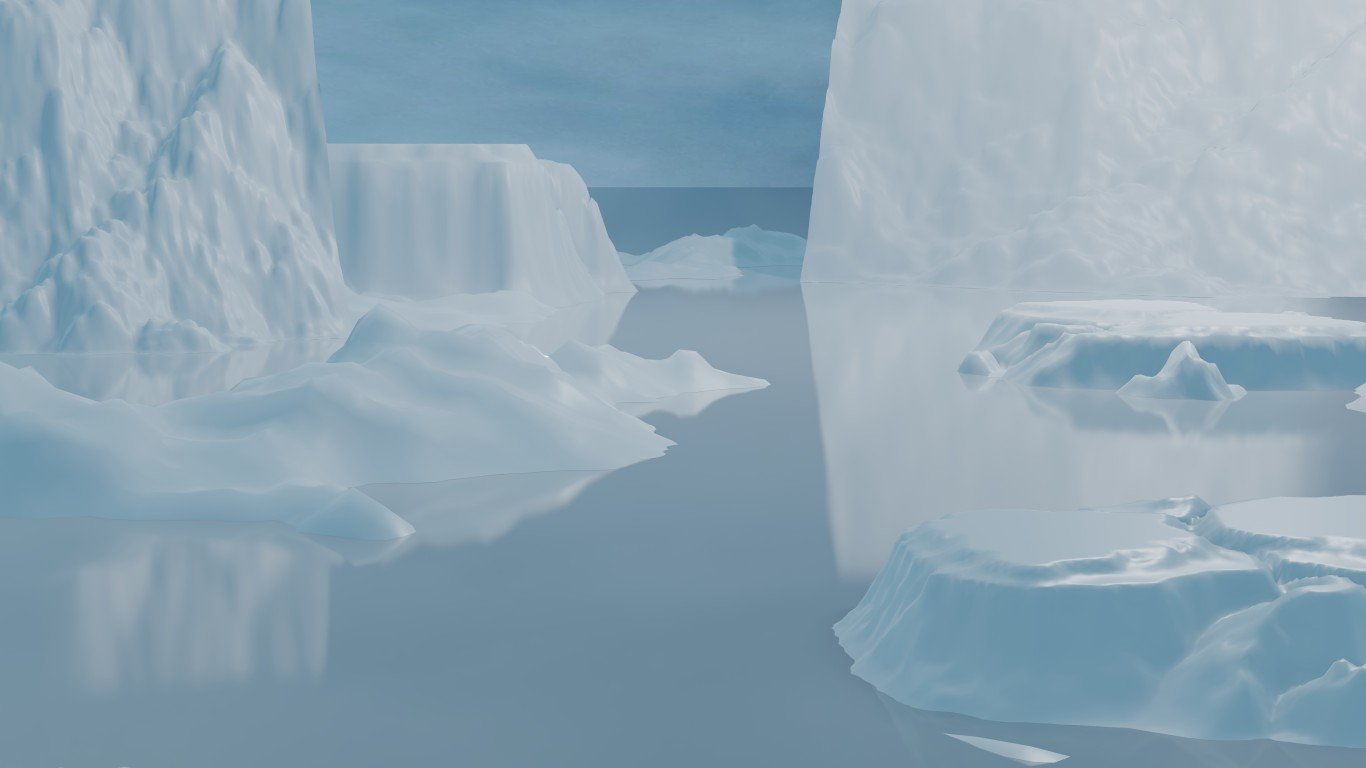
2012: Extreme melt seasons
> Location: Greenland
Greenland’s ice sheet is the second largest on the planet, only behind Antarctica. In 2012, 97% of Greenland’s ice sheet experienced surface melting. In 2019, in yet another warm summer, 60% of the ice sheet melted, producing a record volume loss of 12.5 billion tons. The University Corporation for Atmospheric Research warns that a complete melt of this ice sheet could cause sea levels to rise 21 feet.

2012: Superstorm Sandy
> Location: East Coast of U.S.
Superstorm Sandy hit the East Coast during a full moon and high tide, triggering a massive storm surge and making an already hazardous situation worse. The storm, which occurred at the end of October, was followed by historic flooding and power outages, leaving thousands without heat in the weeks that followed. As a result of Sandy’s direct impact and the aftermath, 159 people died. The storm caused $73.5 billion (inflation-adjusted) worth of damage.

2013: Tornadoes
> Location: Oklahoma
Oklahoma faced two destructive tornadoes in 2013 within an 11-day span. The first was an EF5 tornado that killed 24 people, including seven at a local elementary school, and caused $2 billion in damage. The second, an EF3, 2.6-mile wide tornado, swept through El Reno and Oklahoma City, killing eight and leaving chaos throughout the region. Coinciding thunderstorms also brought flash flooding, taking the lives of an additional 13 people.

2013: Typhoon/hurricane
> Location: Philippines, eastern Pacific
In 2013, Category 5 Super Typhoon Haiyan ravaged the Philippines, and Hurricane Patricia wreaked havoc in the Eastern Pacific. Both storms were record setting, with Haiyan and Patricia reaching sustained winds of 195 mph and 215 mph, respectively. Patricia was the strongest hurricane in the Western Hemisphere. According to World Vision, Haiyan killed over 6,000 people and caused an estimated $5.8 billion. The Weather Channel attributes two deaths to Hurricane Patricia and $325 million in damage.

2014-18: Arctic heat waves
> Location: Arctic
Of the five winters between 2014 and 2018, temperatures in the Arctic rose above freezing — as much as 50 degrees above normal — in four of the five winters. This is an alarming occurrence. In the decades leading up to 2010, such temperatures occurred only four times over thirty years. As more Arctic sea ice thins, the sea water underneath is exposed, leading to increases in air temperature and the perpetuation of additional melting.






